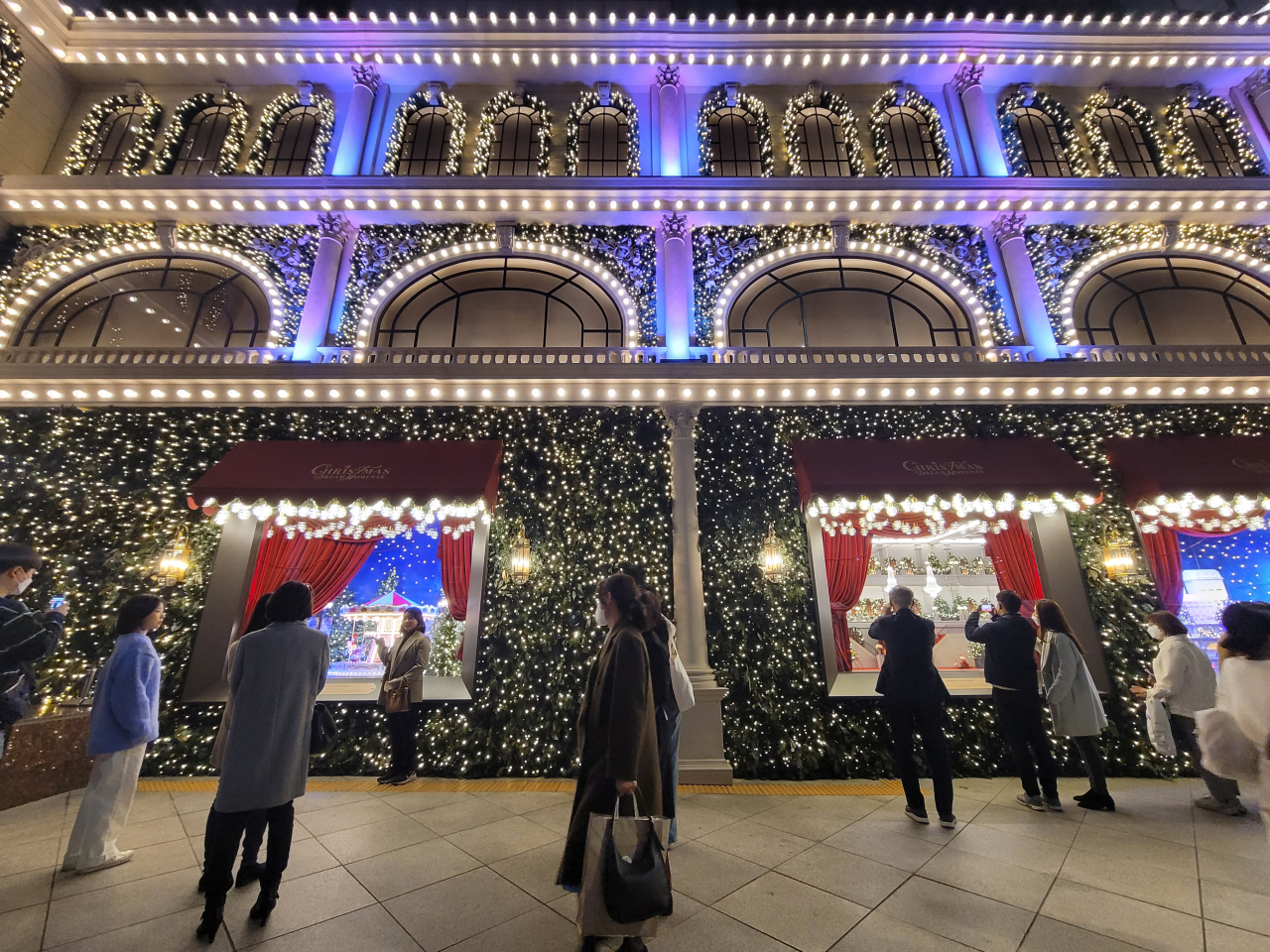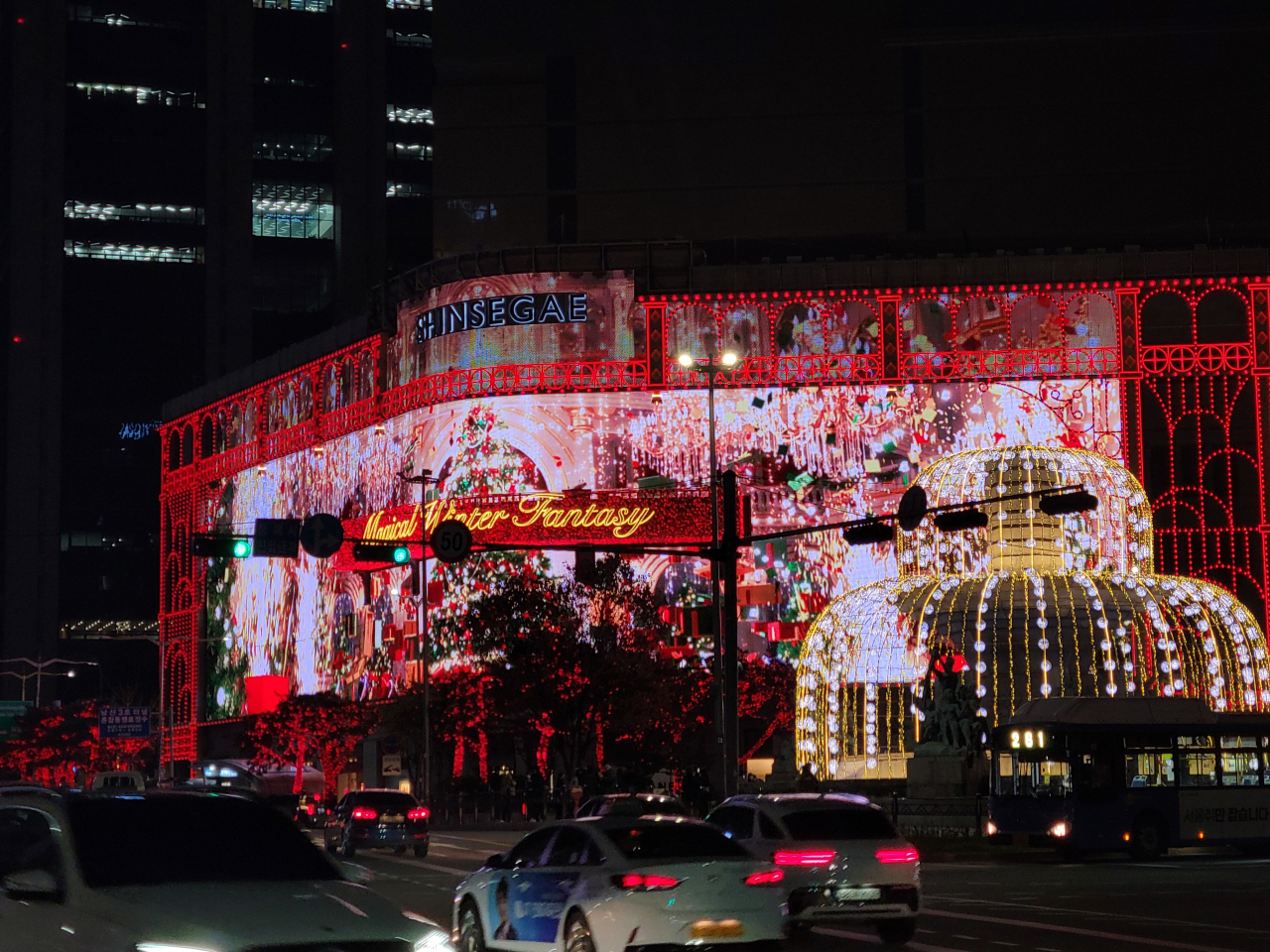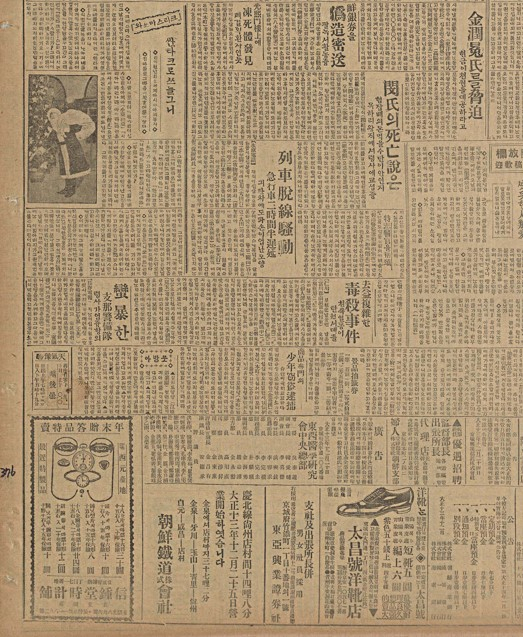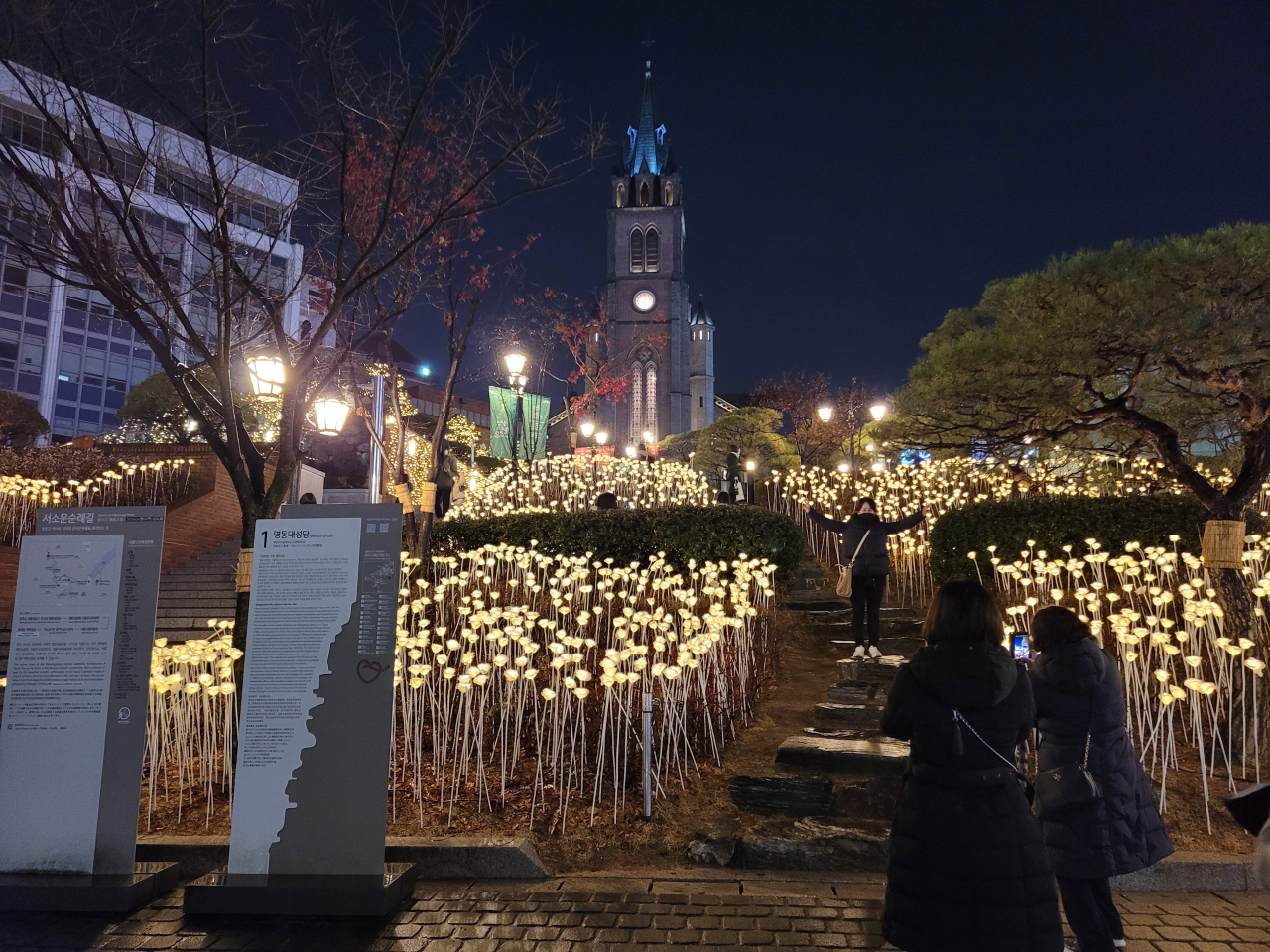[Feature] How Christmas evolved into a day for merrymaking in Korea
By Park YunaPublished : Dec. 17, 2022 - 16:01

When Christmas nears, cities are decorated with sparkling lights and Christmas trees are set up everywhere. Young people get excited as they plan where to go on Christmas Eve with friends and lovers. They search for holiday spots where they can take photos for their social media accounts, to show that they are enjoying the holiday spirit.
Considering the origin of Christmas – a Christian holiday to celebrate the birth of Jesus – some may wonder about when South Koreans began celebrating the holiday, and how they have adapted to the Western holiday throughout history.
Christianity was introduced in South Korea in 1884 by American missionaries. For the following two to three decades, Western missionaries from Canada and Australia also arrived to help with missionary work. It was during the late Joseon era (1392-1910) when Korean people were exposed to Western culture – including Christmas.
“Christmas was a huge holiday for the missionaries. Like Chuseok in Korea, it was celebrated like a festival in western countries. The holiday gradually spread to Korean people, centering around the missionaries as a joyful day,” said professor Park Jeung-keun at Presbyterian University and Theological Seminary in Seoul.
At a time when Korea was embracing Western culture -- which was making inroads in the country -- Korea was annexed and colonized by Japan from 1910 to 1945. Confucianism, which formed the governing philosophy of the 500-year-old Joseon Kingdom, saw its influence start to slowly erode during the colonial period.
It was during the Japanese colonial era that Christmas became tinged with commercialism, according to a book written by a group of researchers on Korean culture in Joseon era, including Youm Won-hee, a professor at the department of international Korean language and culture at Kyunghee University.
Business districts started to form around the Myeong-dong and Chungmuro areas, home to department stores and entertainment industries in the 1920s -- and where 90 percent of the residents were Japanese.

It is in Myeong-dong that one of the biggest department stores of the time, Mitsukoshi Department Store, was located. Today, the building houses Shinsegae Department Store, which in recent years has become a famous spot during the Christmas season for its awe-inspiring facade.
”It was around the 1930s that Christmas turned into a festival widely enjoyed by people, more than a religious holiday (in Korea),” Youm wrote in the book.
Santa Claus debuted as a part of Korea’s Christmas culture in the early 1900s. A picture of a person in a Santa Claus outfit with a bag of presents slung over his shoulder appeared on the Dec. 25, 1924 edition of the daily newspaper “Maeil Sinbo.” The headline said: “Old Man Santa Claus.”

When South Korea was founded with the official name of the Republic of Korea and its first President Rhee Syng-man -- who had attended a Methodist school -- took in office in 1948, Christmas become an official holiday.
According to government data released in 2018, Christians account for some 28 percent of the population in South Korea, with Protestants making up 19.73 percent and Catholics 7.93 percent. The data shows Protestant Christians making up the largest proportion of the population, followed by Buddhists at 15.53 percent. Fifty-six percent of the population does not have a religion.
Christmas in South Korea – a day for lovers, friends
From 1945 to 1982, the country had a midnight curfew, and Christmas Eve was one of few days that the curfew was lifted. Since then, Christmas Eve has been synonymous with a night out on the town for young people – rather than a day with family or a religious holiday.
Restaurants prepare Christmas dinners and booking a table at a popular spot can get very competitive. Hotels also have special packages for those looking for a place to celebrate the holiday with their beloved ones.
“I heard Christmas in South Korea is more for lovers and friends,” said Eva, a 25-year-old Russian student in Seoul who declined to give her last name. “In Russia, those who are religious would go to church, but even those who do not believe in God, they would gather with family and have dinner.” In Russia, people celebrate Christmas on Jan. 7 because the Russian Orthodox Church adheres to the Julian calendar, she added.

Lim Dong-hyeon, 24, was taking a picture with his girlfriend on Monday at Myeongdong Cathedral, the oldest cathedral in the country founded in 1898. The cathedral is decorated with lights in celebration of Christmas.
“I am not a Christian, but Christmas still feels special, and I feel like my girlfriend and I need to do something special like going to a fancy restaurant on the day. There are a lot of things to enjoy in the Christmas season, even though we are not Christians," he said.







![[Graphic News] More Koreans say they plan long-distance trips this year](http://res.heraldm.com/phpwas/restmb_idxmake.php?idx=644&simg=/content/image/2024/04/17/20240417050828_0.gif&u=)
![[KH Explains] Hyundai's full hybrid edge to pay off amid slow transition to pure EVs](http://res.heraldm.com/phpwas/restmb_idxmake.php?idx=644&simg=/content/image/2024/04/18/20240418050645_0.jpg&u=20240419100350)






![[From the Scene] Monks, Buddhists hail return of remains of Buddhas](http://res.heraldm.com/phpwas/restmb_idxmake.php?idx=652&simg=/content/image/2024/04/19/20240419050617_0.jpg&u=20240419175937)

![[KH Explains] Hyundai's full hybrid edge to pay off amid slow transition to pure EVs](http://res.heraldm.com/phpwas/restmb_idxmake.php?idx=652&simg=/content/image/2024/04/18/20240418050645_0.jpg&u=20240419100350)

![[Today’s K-pop] Illit drops debut single remix](http://res.heraldm.com/phpwas/restmb_idxmake.php?idx=642&simg=/content/image/2024/04/19/20240419050612_0.jpg&u=)